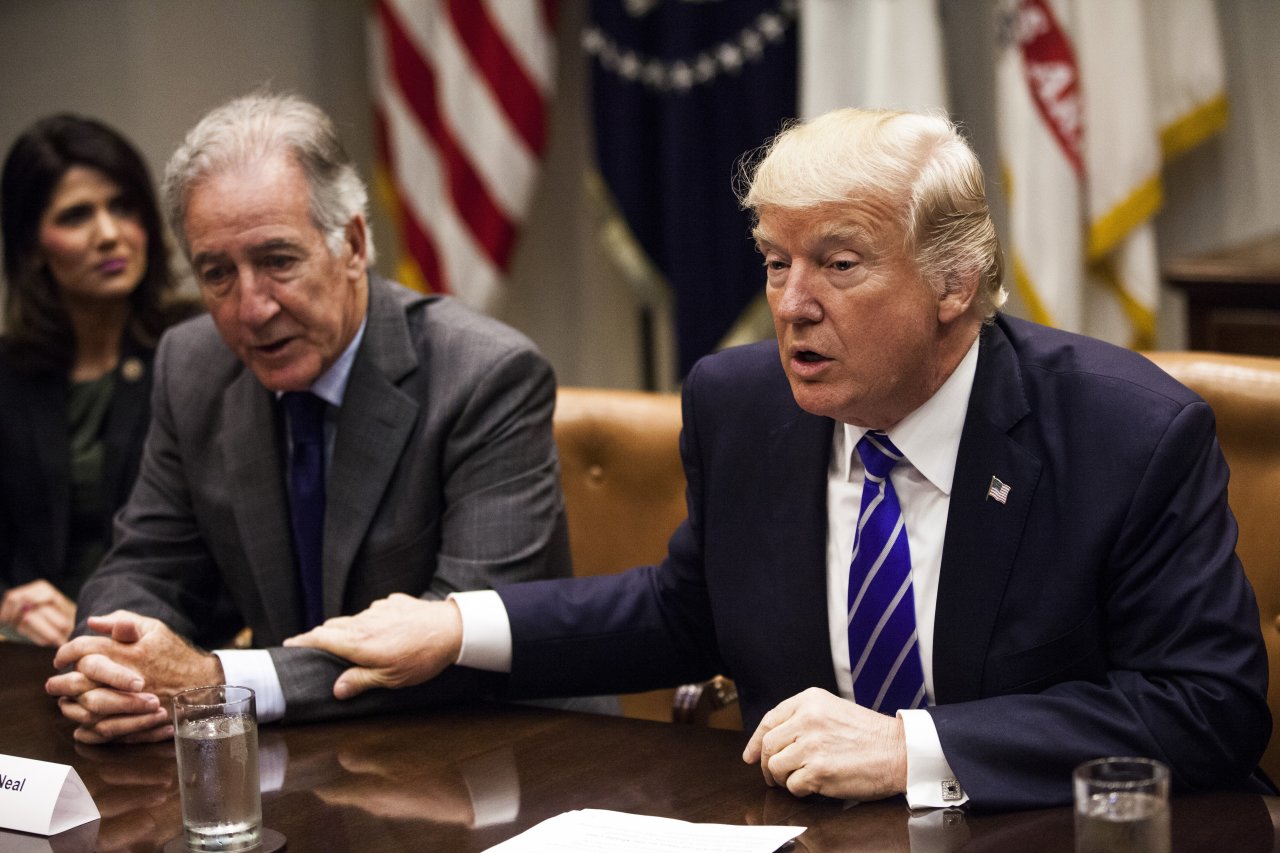The Rise (and Chaos) of Public-Private Partnerships in Trump’s Infrastructure Plan
Public-Private Partnerships (PPPs). The future of infrastructure? Or a bureaucratic maze designed to confuse even the most seasoned federal contractor? Well, under Trump, this funding model wasn’t just encouraged—it became the backbone of America’s infrastructure strategy. Whether that’s a genius move or a logistical nightmare depends on whom you ask.
Here’s the thing: Instead of the federal government shelling out billions to fix bridges, roads, and power grids, Trump’s plan leaned heavily on private investors and state partnerships. The result? A $1.5 trillion infrastructure promise—with only $200 billion coming directly from Uncle Sam. The rest? “Figure it out,” seemed to be the unspoken mantra.
Some saw opportunity. Others? A financial puzzle with missing pieces. Federal contractors had to rethink everything—funding, project bids, revenue models. No more simple “bid-and-build” contracts. Now, you needed to prove you could attract investors, manage long-term leases, and negotiate with both the public and private sectors.
Trump’s Love Affair with PPPs: Why He Pushed for Private Investment
Trump, a businessman at heart (or at least in branding), didn’t want the federal government footing the infrastructure bill like a generous but slightly clueless grandparent handing out cash. Instead, he championed PPPs because they:
- Minimize Federal Spending – Less taxpayer money spent means fewer headlines screaming about deficits.
- Speed Up Approvals – Private investors don’t like to wait. In theory, this should have meant fewer bureaucratic delays (though, in reality…eh).
- Increase Efficiency – Private companies allegedly manage projects better. Allegedly.
- Reduce Risk (For the Government, Not You) – Shifts financial burden onto the private sector, making infrastructure development a “shared” responsibility (but let’s be real, contractors still take on plenty of risk).
But this shift wasn’t just about funding—it was about philosophy. Trump saw infrastructure as an investment, not a government handout. Which, on paper, sounds responsible. But in practice? It meant projects either had to be profitable or they wouldn’t happen at all.
Which Federal Projects Got the PPP Treatment?
1. Roads, Bridges, and Traffic Nightmares
The nation’s highways were crumbling. Everyone knew it. Trump wanted to fix them—but without spending too much federal cash. That meant PPP toll roads, private highway operators, and “innovative” financing models (which sometimes felt more like a game of financial Jenga).
If you were a contractor? You needed partners—banks, private equity firms, maybe a billionaire or two who thought toll roads were the next big thing.
2. Airports and the Dream of Modernization
Trump famously called U.S. airports “third-world” (harsh, but anyone who’s been to LaGuardia might reluctantly agree). The push for privatization meant upgrades were largely left to airlines, private investors, and city-led PPP deals. Contractors looking to win airport bids had to prove they could work with both government agencies and commercial stakeholders—a juggling act, to say the least.
3. Energy Infrastructure: Oil, Gas, and the Green Dilemma
- Pipelines? Greenlit.
- Renewable energy? Well…if there was a profit motive.
- Smart grids? Sure, but don’t expect quick approvals.
The push for energy independence meant more private investment in fossil fuel infrastructure. But renewable energy? It lagged behind because, let’s face it, fossil fuels had a more straightforward (read: lucrative) revenue model.
4. Water Systems: The Infrastructure Nobody Talks About
Water projects needed help. Flint’s crisis put water quality on the national radar, but federal dollars were still scarce. PPPs stepped in for wastewater treatment, desalination plants, and flood control. But the catch? Water isn’t as immediately profitable as a toll road or airport terminal—so funding was unpredictable.
The Ugly Side of PPPs: What Contractors Didn’t Expect
Sure, Public-Private Partnerships sounded great in theory. But in practice? Contractors faced new hurdles, including:
1. Show Me the Money (Or, How Funding Became a Waiting Game)
Unlike traditional government contracts where payment is more predictable, PPPs often required securing outside financing. This meant contractors had to pitch projects to investors, sometimes waiting months—if not years before breaking ground.
2. Bureaucratic Gymnastics
PPPs were supposed to reduce red tape. Instead, they created new layers of complexity. Navigating city, state, and federal regulations while also dealing with private-sector investors meant contractors spent just as much time in boardrooms as on job sites.
3. Risky Business
Federal contracts used to mean guaranteed payment. Not anymore. Many PPP projects relied on revenue streams like tolls, leases, or user fees. If those revenue projections didn’t pan out? Well… someone had to eat the loss. Guess who?
How Federal Contractors Adapted to the PPP Era
1. Partnering with the Right Investors
Big construction firms started cozying up to hedge funds, private equity, and investment banks. Smaller firms? They had to get creative—finding niche markets or joining larger consortia to compete.
2. Specializing in High-Value Projects
Transportation and energy infrastructure got the most private-sector love, so contractors focused there. Water infrastructure? Less funding, more risk. High-speed rail? Good luck convincing investors.
3. Learning the Art of Negotiation
PPP contracts weren’t just about construction—they were about long-term financing, revenue projections, and legal frameworks. Contractors had to become part-time economists, part-time lawyers.
Looking Ahead: The Future of PPPs in Federal Infrastructure
While Trump accelerated the shift toward Public-Private Partnerships, future administrations are unlikely to fully abandon them. Why? Because no one wants to be the president who hikes taxes for infrastructure. Instead, PPPs will likely evolve—maybe with more government safeguards, maybe not.
Trends to Watch
- More local government involvement – Cities and states will play a bigger role in funding.
- A push for sustainable infrastructure – Investors love ESG (Environmental, Social, and Governance) projects now.
- Tech-driven infrastructure – AI-powered traffic systems, cybersecurity for public utilities, and maybe (finally) broadband expansion in rural areas.
FAQs
Did PPPs really speed up infrastructure projects?
In some cases, yes. In others? Delays still happened, just with different players involved.
Are PPPs good for contractors?
Depends. If you’re well-connected, financially stable, and good at managing complex contracts—then yes. If not? It’s trickier.
What was the biggest challenge for contractors in Trump’s PPP model?
Securing financing. Unlike traditional contracts, where payment was assured, PPPs required securing investors and managing revenue streams.
Will PPPs remain the future of infrastructure?
Almost certainly. But expect changes, maybe a shift back toward more government guarantees, or new models altogether.
The Future of PPPs in Federal Infrastructure Development
Trump’s infrastructure plan—heavy on PPPs was bold. For contractors, it created new opportunities but also new headaches. The idea that private investors would eagerly fund America’s roads, airports, and water systems was optimistic (some might say naive). But in many ways, the shift was inevitable.
Will future administrations refine the PPP model? Probably. Will infrastructure funding ever be straightforward? Doubt it. But one thing’s for sure, contractors who learned to play the PPP game have a leg up in whatever comes next.




